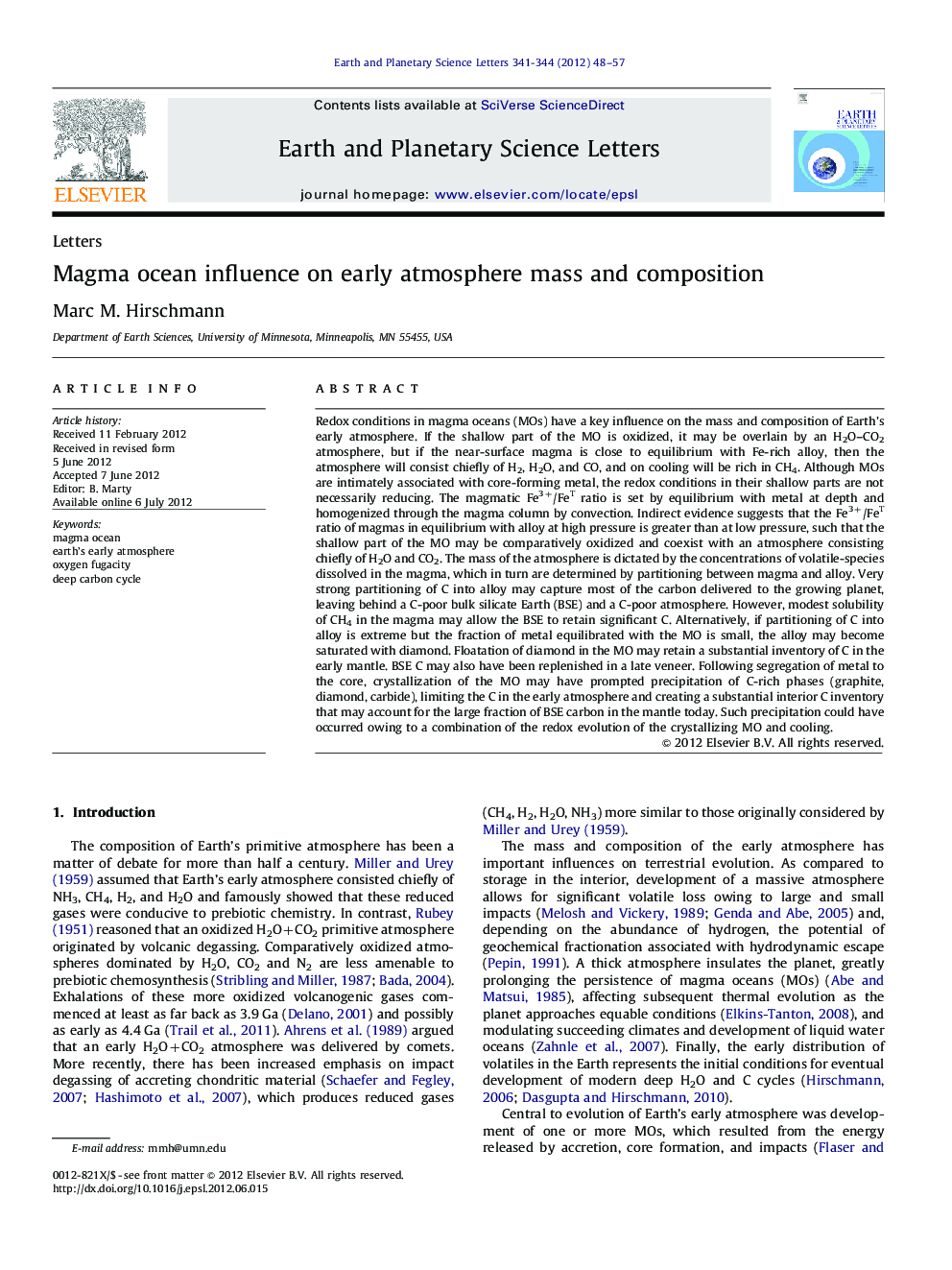| کد مقاله | کد نشریه | سال انتشار | مقاله انگلیسی | نسخه تمام متن |
|---|---|---|---|---|
| 6430519 | 1634800 | 2012 | 10 صفحه PDF | دانلود رایگان |

Redox conditions in magma oceans (MOs) have a key influence on the mass and composition of Earth's early atmosphere. If the shallow part of the MO is oxidized, it may be overlain by an H2O-CO2 atmosphere, but if the near-surface magma is close to equilibrium with Fe-rich alloy, then the atmosphere will consist chiefly of H2, H2O, and CO, and on cooling will be rich in CH4. Although MOs are intimately associated with core-forming metal, the redox conditions in their shallow parts are not necessarily reducing. The magmatic Fe3+/FeT ratio is set by equilibrium with metal at depth and homogenized through the magma column by convection. Indirect evidence suggests that the Fe3+/FeT ratio of magmas in equilibrium with alloy at high pressure is greater than at low pressure, such that the shallow part of the MO may be comparatively oxidized and coexist with an atmosphere consisting chiefly of H2O and CO2. The mass of the atmosphere is dictated by the concentrations of volatile-species dissolved in the magma, which in turn are determined by partitioning between magma and alloy. Very strong partitioning of C into alloy may capture most of the carbon delivered to the growing planet, leaving behind a C-poor bulk silicate Earth (BSE) and a C-poor atmosphere. However, modest solubility of CH4 in the magma may allow the BSE to retain significant C. Alternatively, if partitioning of C into alloy is extreme but the fraction of metal equilibrated with the MO is small, the alloy may become saturated with diamond. Floatation of diamond in the MO may retain a substantial inventory of C in the early mantle. BSE C may also have been replenished in a late veneer. Following segregation of metal to the core, crystallization of the MO may have prompted precipitation of C-rich phases (graphite, diamond, carbide), limiting the C in the early atmosphere and creating a substantial interior C inventory that may account for the large fraction of BSE carbon in the mantle today. Such precipitation could have occurred owing to a combination of the redox evolution of the crystallizing MO and cooling.
⺠Magma oceans (MOs) have vertical variations in oxidation state. ⺠Precipitation of diamond in MO may store C in the early mantle. ⺠Atmospheres are likely H2O+CO2, over deep MO and H2-CO-H2O over shallow ones.
Journal: Earth and Planetary Science Letters - Volumes 341â344, August 2012, Pages 48-57